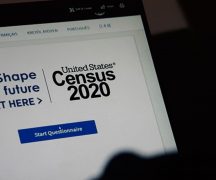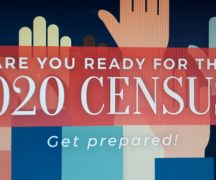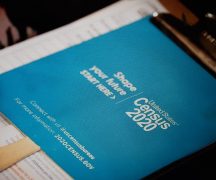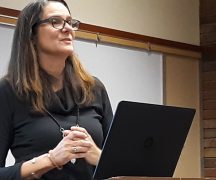By DAVID DUPONT
BG Independent News
Bowling Green State University staff will work closely with the U.S. Census to make sure all the students in residence halls get counted.
Chief Diversity and Belonging Officer Jennifer McCary told Faculty Senate this week that university personnel will take the lead in working with census officials to make sure students fill out the census forms.
That’s necessary given the restricted access to residence halls, which would preclude census takers wandering the halls.
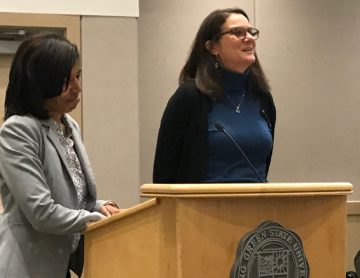
McCary said the university will also be working to make sure that students living off-campus also complete the form.
Students living in Bowling Green should fill out the census as Bowling Green residents.
Wendy Manning, director of the Center for Family and Demographic Research, said this sometimes rubs parents the wrong way. They want to count their college student offspring in their hometowns.
Manning said that given most of the time students live in Bowling Green, that’s where they should be counted because this is where they reside and where they use the resources whose funding is dependent on census data.
The census has already begun in remote villages in Alaska. Others will receive information in the mail between March 12-20 with a registration number. Individuals can fill the census out online using the device of their choice or they can obtain a paper form, or they can talk to a census employee by telephone.
This summer the census will send census takers out to record those who have not responded.
The census is used to determine the 435 congressional districts nationwide, Manning said. Because Ohio is losing population relative to some other states it is projected to lose one seat when Congress is reapportioned. The census numbers will also help determine how the state’s congressional district lines as drawn.
Just as important, Manning said, the data collected is used to determine where federal dollars go. That includes funds for Medicare and Medicaid, highways, Food Stamps, and schools. “All these depend on the population count,” Manning said. “If you’re undercounted, you’re underfunded.”
That affects not just this year, but the next 10 years until the 2030 census. “You’re missing out on a lot of resources in the community. So we as a community and university want to garner as many of these resources as we deserve. We want to count as many people as possible.”
McCary said that participating in the census is as important as voting.
That’s why there will be social media campaigns and other promotional events around the census.
The census will not require any information students haven’t already divulged, McCary said.
Those counted include international students, she added. The census is offered in English and 12 other languages.
There was concern that the Trump Administration wanted to include a question about citizenship. Demographers objected because they felt it would taint the count, as some people would be reluctant to answer the census, Manning said.
After a legal battle, the question was not included.
McCary said DACA students — foreign born residents who were brought to this country by parents lacking proper documents — are a particular concern.
They will not be asked to provide any information that is not available about them already, she said.
McCary said it is estimated that as many as 1.5 million people of color were not counted in the 2010 census.
Manning said that while she understands concerns about confidentiality of all information, she said that no one can access individual census records which are sealed for 72 years.


